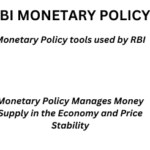Over 28% of Sunderbans damaged in Cyclone Amphan

About 28% of the Sunderbans has been damaged recently by Cyclone Amphan.
LEARNING WITH TIMES/WITHOUT CLASSES : BASICS
One of the impact of depleting mangrove forest will be on global warming. Mangroves represent less that 1 percent of forests in the world, but they have a huge impact on the climate. They are the most carbon rich forests in the tropics with high carbon capturing potential. Hence, their degradation and loss substantially reduce our ability to diminish, and adapt to, predicted changes in climatic conditions.
ABOUT SUNDERBANS
The Sunderbans is the largest block of continuous mangrove forests in the world. It is inhabited by at least 500 different species of fishes, mammals, birds and reptiles. It is also home to mega predator the Royal Bengal Tiger, whose presence in the world is already threatened. The Sundarbans is also a World Heritage Site.
A mangrove is a shrub or salt tolerant small tree that grows in coastal saline or brackish water. The term is also used for tropical coastal vegetation consisting of such species. Mangroves occur worldwide in the tropics and subtropics. They are adapted to the low oxygen (anoxic) conditions of waterlogged mud.
The mangrove forest is predominantly a salt-tolerant forest ecosystem with the exception of an estimated 856.7 million Sundari (Heritiera fomes) trees which are less salt-tolerant. , a critical minimal inflow of freshwater is necessary for the luxuriant growth of mangroves.
Apart from being home to many animals ,Terrestrial forms like the Royal Bengal Tiger, the Sundarbans acts as a natural border or wall for India and Bangladesh against huge tidal waves, sea cyclones, and tsunamis. Their roots also play in important role in trapping sediments and stabilizing shorelines facing increased erosion pressures. The vanishing coast line could therefore bring catastrophic changes, taking with itself entire villages and towns.
CARBON SEQUESTERATION:
Sequestration means storage. Carbon or CO2 sequestration means putting carbon into long-term storage. Importantly, carbon sequestration is both a natural and artificial process by which carbon dioxide is removed from the Earth’s atmosphere and then stored in liquid or solid form;the removal and storage of carbon from the atmosphere to sinks – oceans, soil, forests – through physical means and the natural process best known as photosynthesis.
Terrestrial (or biologic) sequestration means using plants to capture CO2 from the atmosphere and then storing it as carbon in the stems and roots of the plants as well as in the soil. In photosynthesis, plants take in CO2 and give off the oxygen (O2) to the atmosphere as a waste gas. The plants retain and use the carbon to live and grow. When the plant winters or dies, part of the carbon from the plant is preserved (stored) in the soil.





0 Comments